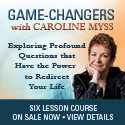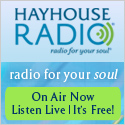Wii Fit and Reiki
As we all know, Reiki is not a substitute for medical care. Neither is it a substitute for regular exercise, which happens to be a passion of mine. I've practiced qigong for more than 20 years, and, especially in the past five years, I've made a point of adding regular aerobic exercise along with some yoga most every day. So my daughter decided that the perfect Mother's Day gift for me would be the new Wii Fit. They didn't go on sale here in the USA until last week, and mine arrived the day after the product launch. By then, Amazon.com was already sold out of them, although they managed to restock a couple of days later. Earlier this week, the Nintendo World store in New York City was also sold out, and the device is already sure to be one of the all-time best selling game products.
Since I've been lucky enough to play with a Wii Fit for the past week, I thought I should offer a few words about it for all those still waiting to get their hands -- or actually, feet -- on one, and even those who aren't sure they'd want one. And since this is The Reiki Digest, I'll be focusing on what, if anything, it has to do with Reiki.
If you're wondering what a Wii Fit is, here's its creator, Shigeru Miyamoto, demonstrating how it works:
And there are already hundreds of videos of users playing with the new device available online.
The Wii Fit is an attachment to the Wii, which uses handheld controllers. Called a "Balance Board" in both English and Japanese, it's essentially a sturdy four-part scale that can measure weight shifts sideways, backward, and forward. Add the Wii interactive software, and you can use the Balance Board for yoga, strength and balance exercises, and aerobics, not to mention weighing your dog.
Like the system of Reiki, the Wii Fit comes to us from Japan. Like Reiki, the Wii Fit includes among its practices a breathing exercise that involves breathing into the lower abdomen and then exhaling as we envision a sphere of light and energy expanding around us. In the case of the Wii Fit, we see three concentric circles: an outer blue ring that contracts when we inhale and expands when we exhale, a small yellow circle that serves as the target area, and a tiny red dot that represents our constantly shifting center of gravity. In Reiki, the idea is to breathe into the hara center, or tanden, an energy center about 2 inches below your navel and a couple of inches inside from there. In Wii Fit, for some reason, the yellow circle is centered over the virtual trainer's elbow area, and the goal is to keep the red dot in the center of it for two minutes.
Reiki helps us learn to focus and direct our attention, and waste less of our own energy. The Wii Fit does the same thing, simply by measuring us constantly in four directions as we use our virtual heads to fend off virtual softballs, enjoy sports we'd never try in real life (like ski jumping or boxing). Regular practice with Reiki keeps us balanced and healthier, and regular practice (in moderation) with the Wii Fit does that, too.
Reiki teaches us not to worry, and so does Wii Fit's virtual ski jump. Even if your Mii (the game's customizable cartoon icon representing the player) tumbles down the run in a ball of snow, you won't need a trip to the emergency room -- unless you get a little too caught up in the game and jump off the Balance Board.
The Wii Fit's incessant measuring keeps us accountable, just as the Reiki precepts tell us to be honest. And it is humbling, since our scores are there staring us in the face: one reviewer's article was headlined, "I'm in my 20s, but Wii Fit thinks I'm middle-aged!" It makes us more compassionate to ourselves, since we're doing our bodies good by playing with it (in moderation). Does it make us more compassionate to others? Yes, if we're willing to share it, since only one Balance Board can be hooked up at a time. It does cause family members to pay more attention to each other's health and fitness, since it keeps records on all participants in the household, and players compete for the top scores in everything from relaxed breathing to hula-hooping to step aerobics.
The longer you work with Reiki, the more it pays off. And the more you work with the Wii Fit, the more exercises become available to you. We've reached the most advanced balance exercise available so far, Lotus Focus, in which you sit still on the Balance Board while a virtual candle burns in front of you and a series of distractions try to draw your attention. The trick is to ignore all those distractions to keep the candle from flickering out. Reiki also teaches us to filter out distractions, and for that matter, to stay balanced, to keep the light inside us burning steady and strong. One of the early reviewers complained that the Wii Fit's yoga program didn't include a spiritual component. Apparently she was not a Reiki practitioner.




































